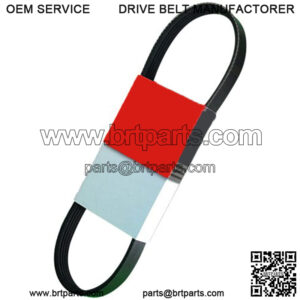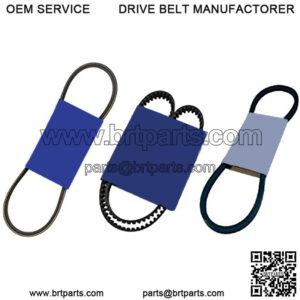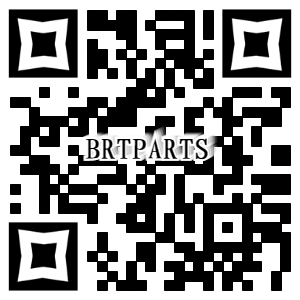A V-belt is a composite of different types of rubber, synthetic rubber, and polymers that are combined with reinforcements. In its usual application, a V-belt is subjected to combined tensile and compressive stresses. The top side of a V-belt is subjected to a tensile force directed longitudinally, while the bottom side is compressed due to the compression against the grooves and bending as a belt segment passes the pulley. The surface of the belt needs different types of materials with a high coefficient of friction and increased wear resistance.
V-Belt Fabric Cover
The fabric cover of V-belts makes contact with the surface of the sheave. It is made of a material capable of withstanding high abrasion and is resistant to contaminants. It protects the elastomer and tension cord from the harmful effects of chemicals, corrosion, and high temperatures.
Often referred to as wrapped V-belts, coverings give V-belts a uniform look, feel, and smoothness. The proper covering suppresses noise from the belt when it is in operation. The abrasion resistance of V-belts increases their durability since contact with the sheave normally occurs at exceptionally high speeds.
Aside from the obvious benefits of texture and appearance, wrappings or coverings increase friction with the surface of the sheave to prevent slippage. When torque spikes happen, V-belts are forced to make an immediate response. Raw V-belts buckle and break under such conditions, while wrapped or covered V-belts will slip before sending power back to the gearbox or drive as a safety precaution.
V-Belt Tension Cord or Member
Tension cords are embedded into the rubber compound of a V-belt, creating a composite structure, and are power-transmitting components. They are positioned at the pitch diameter of the belt cross-section to increase tensile strength. Tension cords are made of polyester, steel, or aramid fibers. In some V-belt constructions, the tension cord is bonded into the core by an adhesion rubber.
To increase the strength of tension cords, they are made of continuous material, like wire, without joints. The design provides essential reinforcement, tensile strength, and durability to withstand the transmission of torque.
V-belts are designed to transfer rigidity, which is at high levels across the width of a V-belt and requires tensile cords to transfer the load equally. The flexibility of the tension cord is necessary to reduce heat and stress from bending. All of these factors are accomplished by the parallel arrangement of the tension cord.
The tensile cord is held in place by adhesion gum that forms a bond between it and the rubber stock elastomer core. The bonding of the two elements forces the different components to perform as a single unit.
V-Belt Elastomer Core
The elastomer core holds the components together and gives a V-belt its trapezium cross-section. It is made from a variety of materials with shock resistance, high flexural strength, and temperature stability. Common elastomers used are neoprene, EPDM, and polyurethane.
In some designs, the elastomer core is divided into two sections separated by the tension cord placed between a top cushion of rubber above and compression rubber below. The two sections are made from different types of rubber because of the stresses they experience.
Wrapped and Raw Edge V-Belts
In terms of structure, v-belts can be categorized as wrapped belts and raw edge belts. Wrapped v-belts are considered standard v-belts with all sides wrapped in a fabric cover. Wrapped v-belts have a higher resistance against external elements and quieter operation. However, the downside is a lower coefficient of friction resulting in power loss. Wrapped v-belts are used on applications that require some amount of slippage without damaging the belt.
In contrast with wrapped v-belts, raw edge v-belts do not have covers at their flanks. This means the elastomer core is exposed and in contact with the surface of the pulley. The elastomer core has a higher coefficient of friction than the fabric-covered ones, allowing for better grip. The elastomer core of raw edge v-belts has higher wear resistance than the core found on wrapped v-belts. Raw edge v-belts are further divided into three types:
- Raw Edge Plain (REP): With raw edge plain, the top surface is covered with one or more layers of a fabric cover with covering at the bottom side present or not, depending on the design.
- Raw Edge Laminated (REL): Raw edge laminated types of v-belts are similar to REP but have additional layers of laminate fabric at the elastomer core. The addition of the laminated fabrics helps reduce noise.
- Raw Edge Cogged (REC): Raw edge cogged, also known as raw edge notched V-belts, have cogs or notches at the bottom side of the belt. Cogs improve the flexibility of the belt, allowing use for pulleys with small diameters. The increased surface area at the bottom creates better heat dissipation, making them suitable for high-temperature applications.
About V-Belt
“v belt”
“v belt pulley”
“how to measure a v belt”


